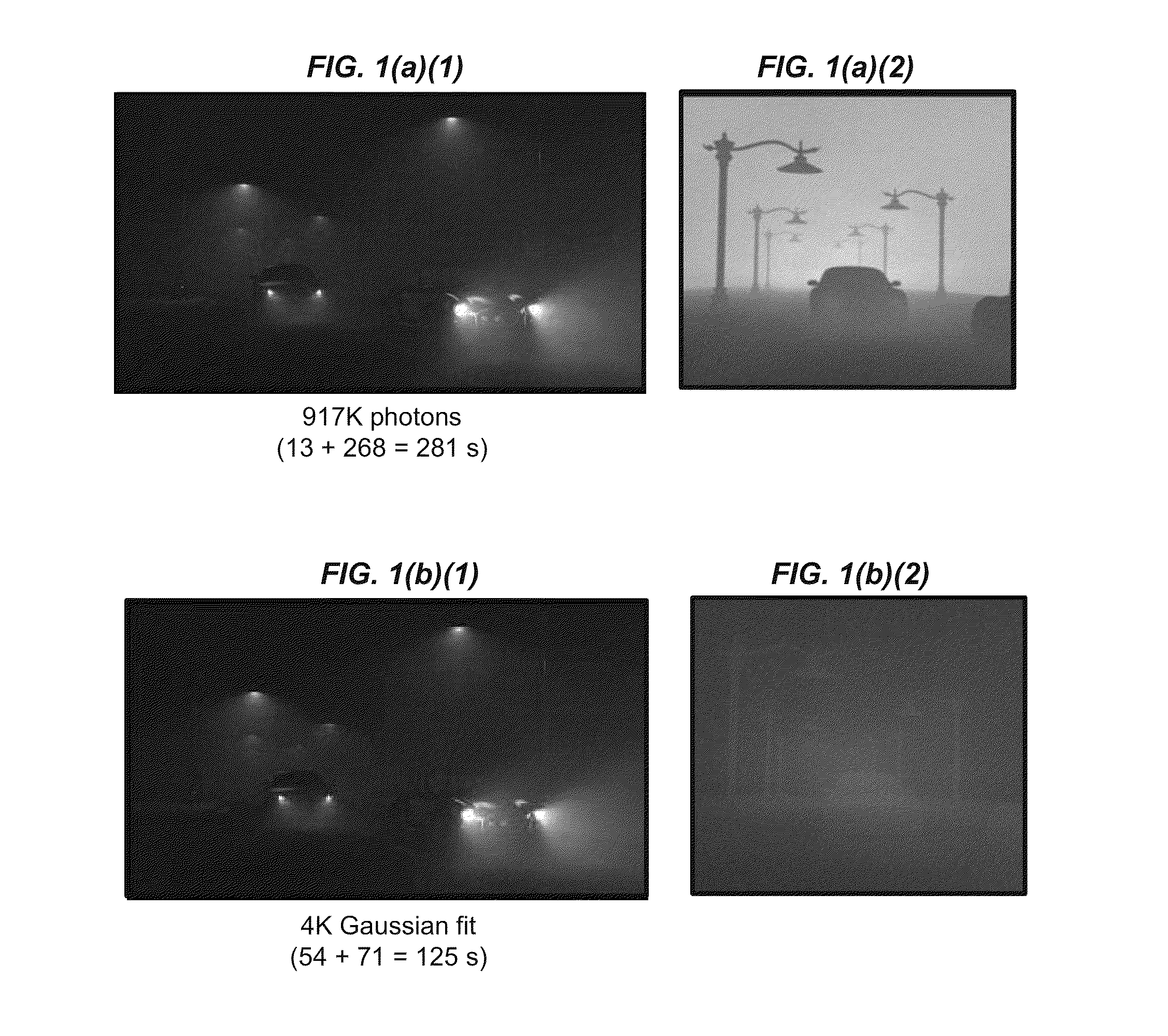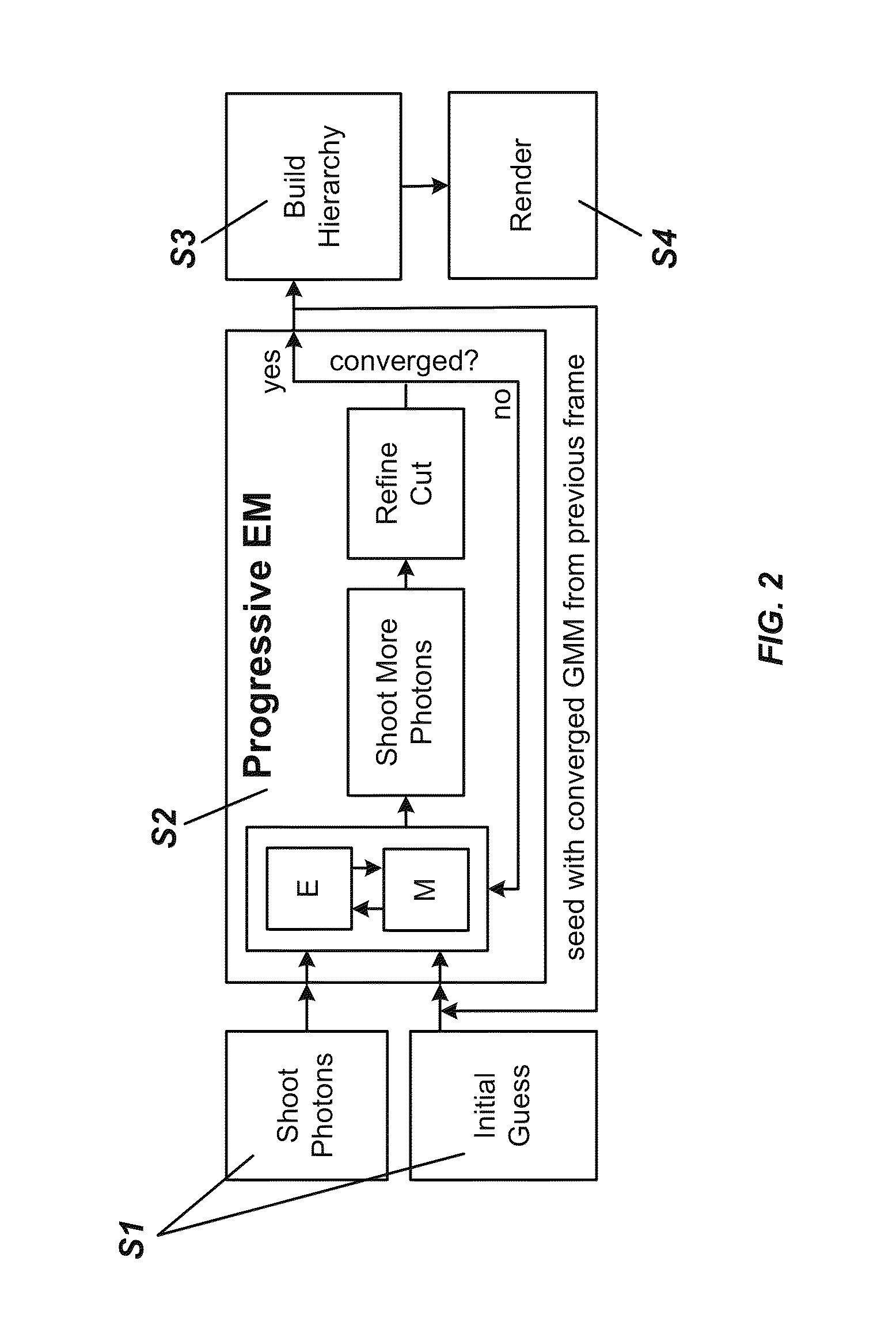Progressive expectation-maximization for hierarchical volumetric photon mapping
a volumetric photon and expectation-maximization technology, applied in the field of progressive expectation-maximization for hierarchical volumetric photon mapping, can solve the problems of notoriously slow convergence to noise-free images, particularly problematic, and complex visuals, and achieve accurate reconstruction, efficient rendering of images, and better reconstruction
- Summary
- Abstract
- Description
- Claims
- Application Information
AI Technical Summary
Benefits of technology
Problems solved by technology
Method used
Image
Examples
Embodiment Construction
[0077]The present invention is described herein, in many places, as a set of computations. It should be understood that these computations are not performable manually, but are performed by an appropriately programmed computer, computing device, electronic device, or the like, that might be a general purpose computer, a graphical processing unit, and / or other hardware. As with any physical system, there are constraints as to the memory available and the number of calculations that can be done in a given amount of time. Embodiments of the present invention might be described in mathematical terms, but one of ordinary skill in the art, such as one familiar with computer graphics, would understand that the mathematical steps are to be implemented for execution in some sort of hardware environment. Therefore, it will be assumed that such hardware and / or associated software or instructions are present and the description below will not be burdened with constant mention of same. Embodimen...
PUM
 Login to View More
Login to View More Abstract
Description
Claims
Application Information
 Login to View More
Login to View More - R&D
- Intellectual Property
- Life Sciences
- Materials
- Tech Scout
- Unparalleled Data Quality
- Higher Quality Content
- 60% Fewer Hallucinations
Browse by: Latest US Patents, China's latest patents, Technical Efficacy Thesaurus, Application Domain, Technology Topic, Popular Technical Reports.
© 2025 PatSnap. All rights reserved.Legal|Privacy policy|Modern Slavery Act Transparency Statement|Sitemap|About US| Contact US: help@patsnap.com



